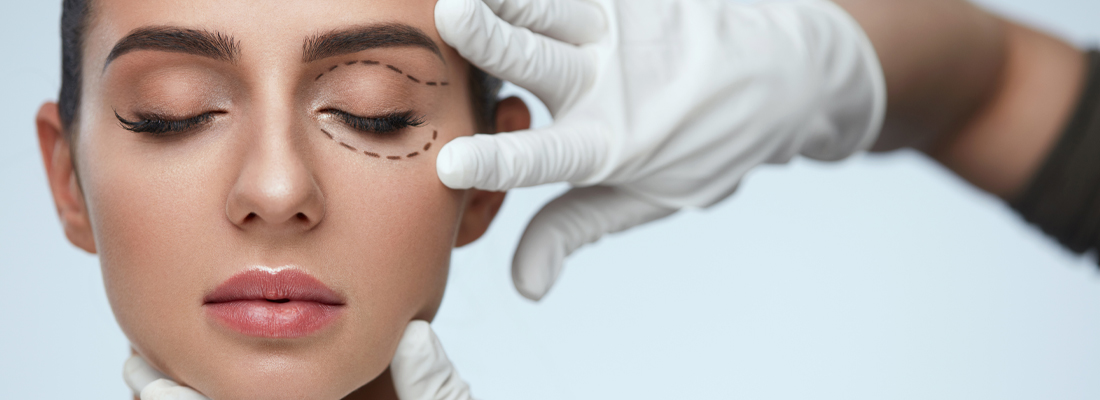Facial Aesthetics
Contact Us
Fill in the form to get detailed information and to make an appointment.
Social Share
Op. Dr. Şükrü İşler
With the advancement of age and the effect of gravity, skin loosening, excess and sagging occur in the eyebrows, upper and lower eyelids, and with this, there may be bagging, especially in the lower eyelids, with the forward herniation of the fat tissues. In addition to causing an aesthetic appearance disorder, this situation can prevent the person from seeing by drooping upper eyelids closing the front of the eye. With aesthetic eyelid surgery, excess skin is removed and the membrane in front of the herniated adipose tissue is strengthened and-or the excess fat mass is removed. In this way, both a beautiful appearance is obtained and the person can see comfortably. A scar is left along the lid on the upper eyelid. However, since this trace will be adapted to the lid fold, it is only visible when viewed very closely. On the lower lid, a trace remains just under the eyelashes, the rest of the trace looks like a normal skin line on the side. Eyelids are the least scarring part of the human body.

The operation can be performed under local anesthesia, as well as in hospital conditions, under the supervision of an anesthesiologist and in the operating room. According to the patient’s current complaints, only the upper or lower lids or both lower and upper lids can be operated simultaneously. The operation takes an average of 1-1.5 hours. It is possible to go home the same day.
Loose or sagging skin that creates a fold that disrupts the natural appearance of the upper eyelid and makes it difficult to see, fat deposits in the form of swelling on the eyelids, bags under the eyes, drooping of the lower eyelids that reveal the white under the iris, excess skin in the lower eyelid and fine wrinkles. In short, on the lower and upper eyelids; Deformities such as sagging, excess skin and bagging are the main causes of eyelid aesthetic operations.
The upper lid can be corrected with an incision in the natural crease on the eyelid. This allows the removal or repositioning of fat deposits, tightening of muscles and removal of excess skin.
Conditions on the lower eyelid can be corrected with a cut just below the lower lash line. With this incision, excess skin on the lower eyelid is removed. Again, excess oil can be repositioned or removed.
It is important that surgical incisions are not subjected to excessive force, abrasion or movement during healing.
People over the age of 30, who have started to sag and bagging on the upper and lower eyelids, and who have no other health problems, are candidates for this surgery.
Early period after surgery usually passes on at ease. There may be swelling and bruising around the eyes. Dry eyes, burning sensation, blurred vision may occur. Tears may increase, eyes may be disturbed by light for a while. The patient may not be able to close his eyes completely in the first days. These are expected events that occur spontaneously within the first week. Stitches are removed after 3-5 days or dissolve on their own.
The surgery gives good results. Rarely, revision (re-surgical intervention) may be necessary. The person can return to work after 3 days. If he is using it, he can wear his contact lenses after 1 week. Since the new shape of the eyelids will be affected due to gravity, it will last for a few years and sometimes for a lifetime, depending on the person's body.
The incision lines for eyelid surgery are designed in such a way that the resulting scars are hidden within the natural structures of the eyelid region.
The upper lid can be corrected with an incision in the natural crease on the eyelid. This allows the removal or repositioning of fat deposits, tightening of muscles and removal of excess skin.
Conditions on the lower eyelid can be corrected with a cut just below the lower lash line. With this incision, excess skin on the lower eyelid is removed. Again, excess oil can be repositioned or removed.
It is important that surgical incisions are not subjected to excessive force, abrasion or movement during healing.
• Glasses should not be used for a month after the operation.


